Sixty years ago today, on April 24, 1957, the Prince Skyline debuted on a rainy day at the famed Tokyo Takarazuka Theater. It’s no exaggeration to say that few cars have a more revered place in the Japanese psyche, having served as everything from lowly family sedan to racing legend. To commemorate six decades of continuous production, Nissan marked this momentous occasion by holding multiple celebrations across Japan’s biggest metropolitan region.
The festivities kicked off Friday with a display at the posh Roppongi Hills district of Tokyo. Called Skyline Timeline, the event gathered every generation of Skyline — all thirteen of them — together for a lineup of iconic Nihon steel.
Taking center stage was a pairing of the first Skyline and the latest Skyline. A 1957 Prince Skyline Deluxe represented the earliest days of the model, when it was introduced as a luxury sedan by the Prince Motor Company. Prince was Japan’s premier carmaker, with a focus on large cars and trucks, and leaving the people’s cars to lesser companies.
The ALSI-generation Skylines are not as lionized as later iterations but was still, relatively speaking, a sporty and somewhat sophisticated sedan. It featured front double wishbones and a De Dion rear suspension, commonly found in sports cars at the time and a first for a Japanese car. It was also the fastest car produced in Japan back then, with a top speed of 125 kph (77 mph).
Denoting the second generation was a 1965 Prince Skyline 1500 Deluxe, which kicked off the S50 chassis with a 1.5-liter inline-four. It was a car very much like this into which Shinichiro Sakurai stuffed a Prince Gloria 2.0-liter straight-six, lengthening the nose by six inches in the process. The Frankenstein’ed sedan kicked off the Skyline’s racing legend at the 1964 Japan Grand Prix when it passed a purpose-built Porsche 904.
By the time the third-generation Skyline came into production, Prince had been fully absorbed into Nissan at the behest of the Japanese government, who believed that the industry would have greater success if consolidated. The Hakosuka, nicknamed for its boxy styling, (hako means “box”; suka is the Japanese pronunciation of “sky”), became one of the most beloved cars in Japan’s motoring history thanks to the introduction of the Skyline GT-R. With a four-valve-per-cylinder, triple-carb, twin-cam six and a four-wheel independent suspension with semi-trailing arms, it dominated Japanese touring car racing in the late 60s and early 70s.
Today, there are countless GT-R clones built from lesser Skylines. That makes the humble 1971 Skyline 1500 Sports Deluxe on display all the more rare. Like the Prince before it, it was offered in both four- and six-cylinder configurations, and Nissan chose to show the short-nose four.
The fourth-generation Skyline was just as adored as the third, but for entirely different reasons. Though a GT-R version was briefly built, it never raced due to the sudden onset of the 1973 OPEC Oil Crisis. Only 197 GT-Rs were completed before its racing program was axed. As such, models like the 1973 Skyline 2000 GT-X on display were far more representative of the generation.
However, a clever ad campaign showing a young couple named Ken and Mary taking their Skyline on beautiful drives across the country struck a chord with even the non-car enthusiast public. The Kenmeri, as this gen came to be called, arrived just as Japanese citizens were reaching middle-class and could afford a car not simply as transportation, but to harness the romance of the open road.
By the time the fifth-generation Skyline emerged, Nissan thought the model was so synonymous with Japan that they advertised it as “Japan’s culture, Japan’s car.” As it happens, it became known as the Skyline Japan.
Though it continued the round quad taillight theme of the Kenmeri, a GT-R version was not in the cards. Instead, Nissan gave it the L20ET, Japan’s first turbocharged engine. The 1980 Skyline 2000 GT-E-L on display was an entry-level just above base.
The sixth generation came about in 1981, ushering in the new decade with a clean design and straight lines. Though a variety of engines were offered, including a six-cylinder, the range topper was the mill found in the 1983 Skyline Hardtop 2000 Turbo RS on display —the FJ20ET turbocharged, 4-valve-per-cylinder, twin-cam 2.0-liter four.
Early versions of the R30 were called Newman Skylines thanks to commercials featuring actor Paul Newman, while facelifted, grille-less versions were called Tekamen, or “iron mask,” Skylines. It was with this generation that Nissan returned to racing officially, making a splash with a Group 5 Super Silhouette version of the iconic red and black two-tone.
The next generation was called simply the Seventh Skyline. It was the height of the Bubble Era, and no technology was deemed too exotic for the Japanese driver. Features available on the R31 included a smart card that keylessly unlocks the doors, active aero, and the world’s first four-wheel steering system, which Nissan called Super-HICAS (High Capacity Actively Controlled Steering).
The 1985 Skyline 4Door Hardtop Twincam-24V Turbo Passage on display had the Skyline’s first pillarless sedan design, as well as the first use of the famed RB-series engine with an RB20.
The eighth generation ushered in a new age of the Skyline name. Launched at the cusp of what would become the tuner era, Nissan revived the legendary GT-R name with a twin-turbo RB26 and AWD. Smaller and lighter than the outgoing model, it once again took to Japan’s Group A series and won every single race it competed in.
For the first time, a nickname was bestowed upon a Skyline from someone other than the Japanese. When the GT-R hit Australia and became an unbeatable force in motorsports on the continent, the Aussies dubbed it Godzilla. The model on display was not the famed GT-R, but a 1993 Skyline Sports Sedan GTS 25 Type X-G.
The ninth generation Skyline saw incremental improvements to the already potent machine, including the introduction of electronic HICAS and active LSD. It continued to see racing successes, and even raced at Le Mans.
The 1997 Skyline 4-Door GTS 25t Type M on display was a present from Kozo Watanabe, Nissan’s chief engineer of the R33 and R34 Skylines. However, Watanabe-san, now retired, has a history with Nissan dating back to 1967, and was a test driver largely responsible for taking the Skyline GT-R to the Nürburgring and setting the fastest production car record, kicking off decades of manufacturer tests at the Green Hell.
The tenth generation is considered by many to be the ultimate Skyline, the fullest expression of the model’s performance ethos. Sadly, it was also a car of many lasts. The R34 was the final Skyline to truly sport the quad taillight design. It was the last Skyline to be powered by the traditional inline-six. And it was the last Skyline to have a high-performance GT-R version. Appropriately, Nissan chose to represent the culmination of Skyline performance with a 2000 Skyline GT-R V-Spec II in Wangan Blue.
After the R34, the eleventh through thirteenth Skylines all came with the V chassis code designation, while the Nissan GT-R held onto the R and became the R35. Ironically, the V35, V36 and V37 Nissan Skylines were once again a premium model like the Prince Skylines of the 1960s, sold as an Infiniti in much of the world.
As is the custom in Japan, a display like this would not be complete without some activities for kids and collectors alike. The Skyline Timeline Studio allowed fans to superimpose themselves in classic photos corresponding to each era of Skyline. Also on offer were keitai straps of every Skyline generation, dispensed at random by a capsule machine at ¥500 ($5) a turn. Naturally, it was completely sold out by the afternoon.
However, the celebration wasn’t over. Across town at the newly remodeled Nissan Crossing in Ginza, another display was taking place. Here, in the much smaller space, only two Skylines were shown.
The first was another Hakosuka, this time a 2-door Skyline 2000GT-X, a beautiful an example as there ever was. In a surprising turn of events, however, a peek inside revealed an extremely rare option — a NissanMatic 3-speed auto.
Its companion was another V37, same as the one at Roppongi Hills. That’s because both were Skyline 60th Anniversary Special Editions. Distinguishing features include a brown semi-aniline leather interior, open-pore wood trim, and a black headliner.
Elsewhere in the showroom was a replica of a Hakosuka design sketch, part of a special display celebrating the anniversary, a Leaf electric racer car, and one potential future for the GT-R, represented by the Gran Turismo Vision 2020 GT-R concept.
Since it is now April 25th in Japan, both of these displays have ended. However, the showroom at the Nissan Gallery Yokohama continues the anniversary observance with a display that includes the rare BLRA-3 Prince Skyline Sport, a Kenmeri hardtop coupe, and another R30 RS Turbo. The display continues until May 31.
It seemed Nissan deliberately included as many normal-spec Skylines in the displays as possible, rather than present a full house of performance models. It makes sense, because the Skyline was truly an everyman’s sport sedan, albeit one that grew into a car of almost mythic status. The long-running nameplate has survived not only its original maker, the Prince Motor Company, but also the venue of its debut. The Tokyo Takarazuka Theater was demolished in 1998 and rebuilt in in 2001. For more than half a century, the Skyline name has defined Nissan’s sport sedan bona fides. Hopefully, the legacy will continue with 60 more.


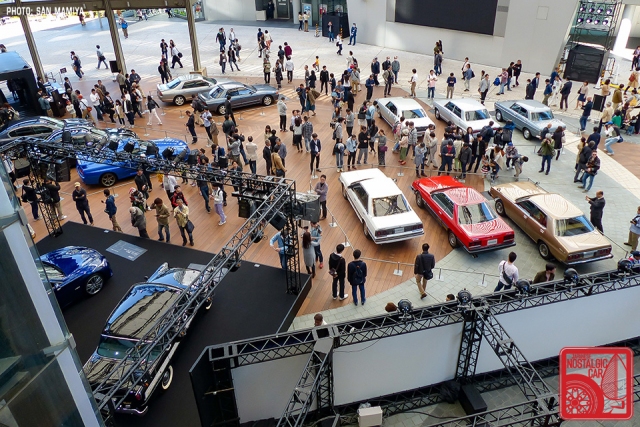


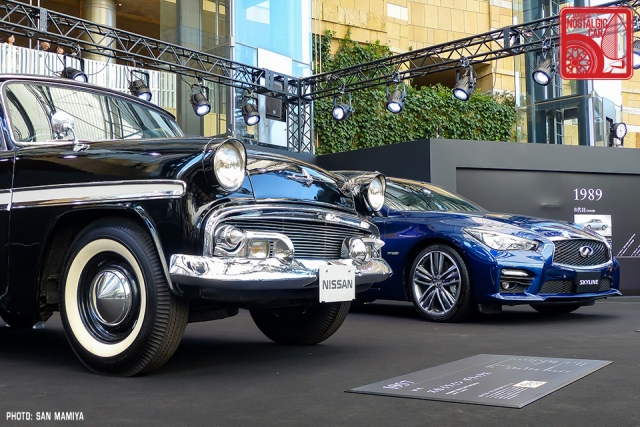
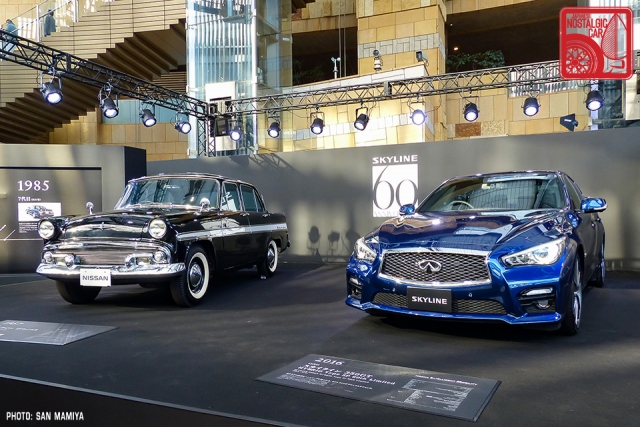
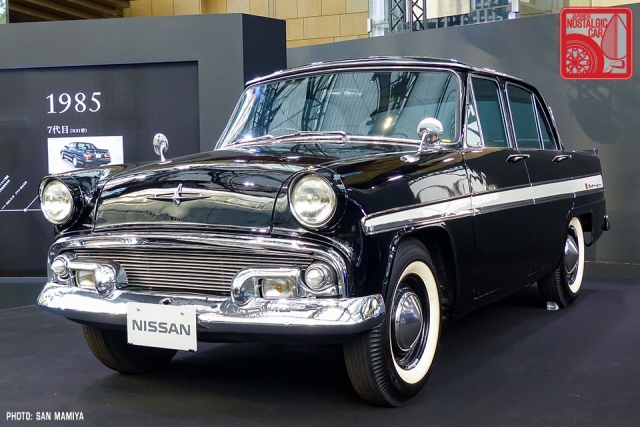




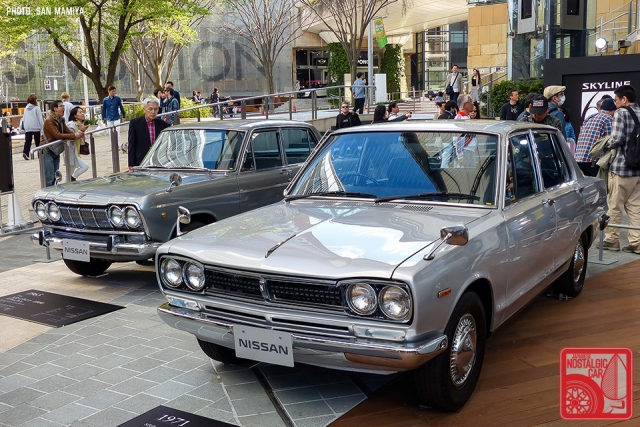


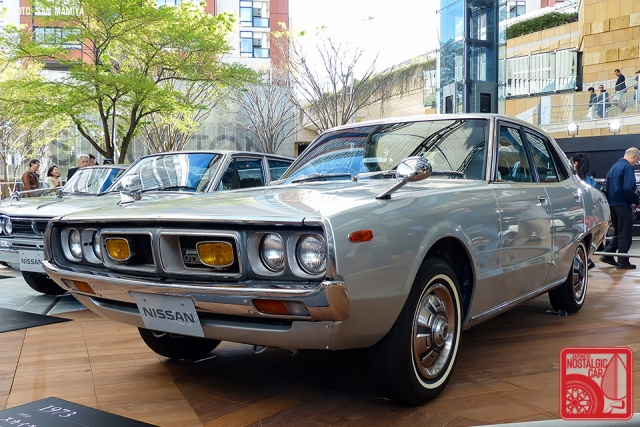



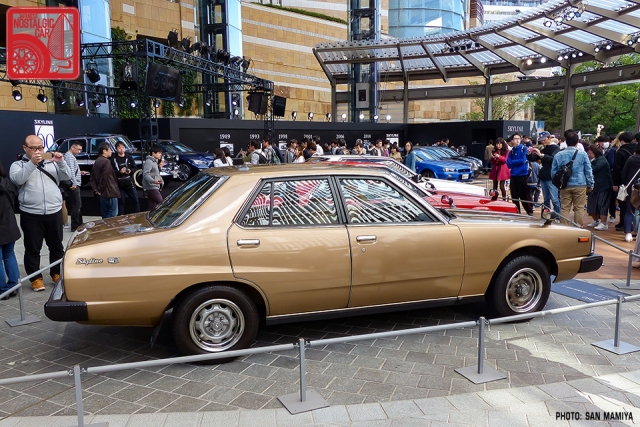
















































Looks like a neat little event – thanks for the photos and write-up. On the subject of the R34, I thought that colour was known as Bayside Blue? Does it have a different name in Japan? Or is that a different colour entirely?
Regarding the classic Skyline v Porsche 904 story, Ikuzawa did mention in a recent interview that the famous pass and the lap he led was something of a pre-arrangement between himself and his friend in the 904, as a surefire crowd-pleaser. As you’d expect (and given that the lead didn’t last long), the Skyline wasn’t anywhere near the 904 in terms of pace.
Wangan means Bayside in Japanese 🙂
Ah. Consider my face palmed. Thanks Ben.
Do you know anyone that prints the replica of that “C10 Design sketch”?? Would love to get one…
Sorry, I don’t think it’s available anywhere unless Nissan decides to make them.
You could try emailing Nissan. I know the Big Three will release clay model photos if you ask nicely. I got a slew of Corvair Greenbrier photos from GM last year.
I should add that you need to find out who to email if you want a serious response. There’s usually a “Heritage” or “Historical” group of some sort if you dig far enough into the website.
Awesome article!
For some reason, I can’t stop staring at the r33’s tail lights. I never noticed the difference between the sedan and coupe’ models until recently. They look ugly, but for some reason I really really like them ?
I dig them too. Very unique.
Awesome! As an owner of a an R33 GTS I can honestly say they have special unique character…having owned various performance Alfas and Holdens over the years I can only say the Skyline is my favourite!
Too many cool ones to choose a favorite !!